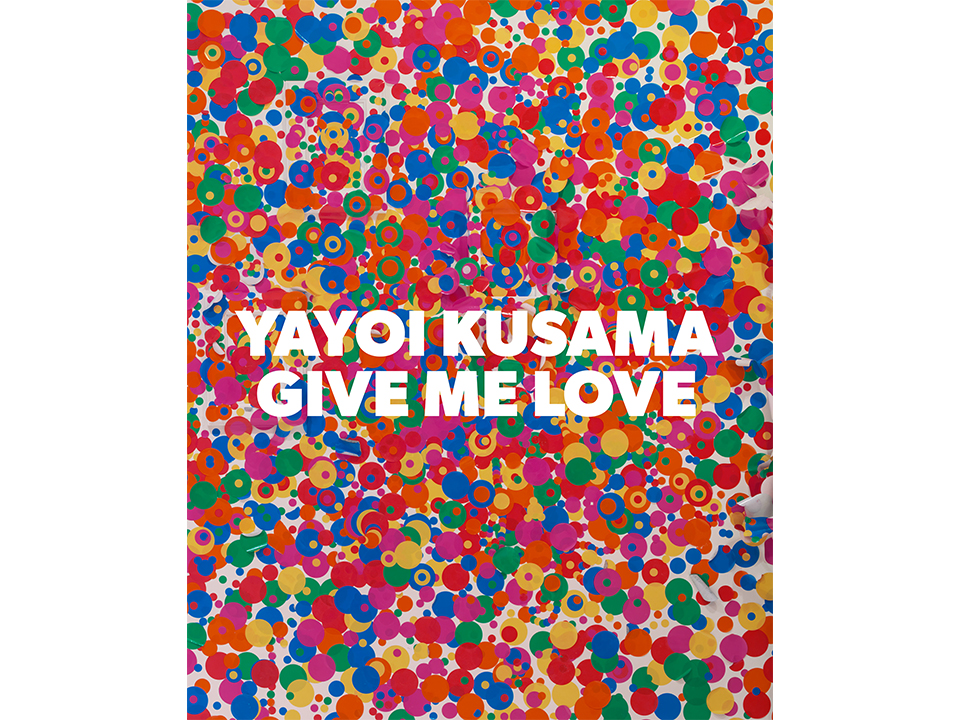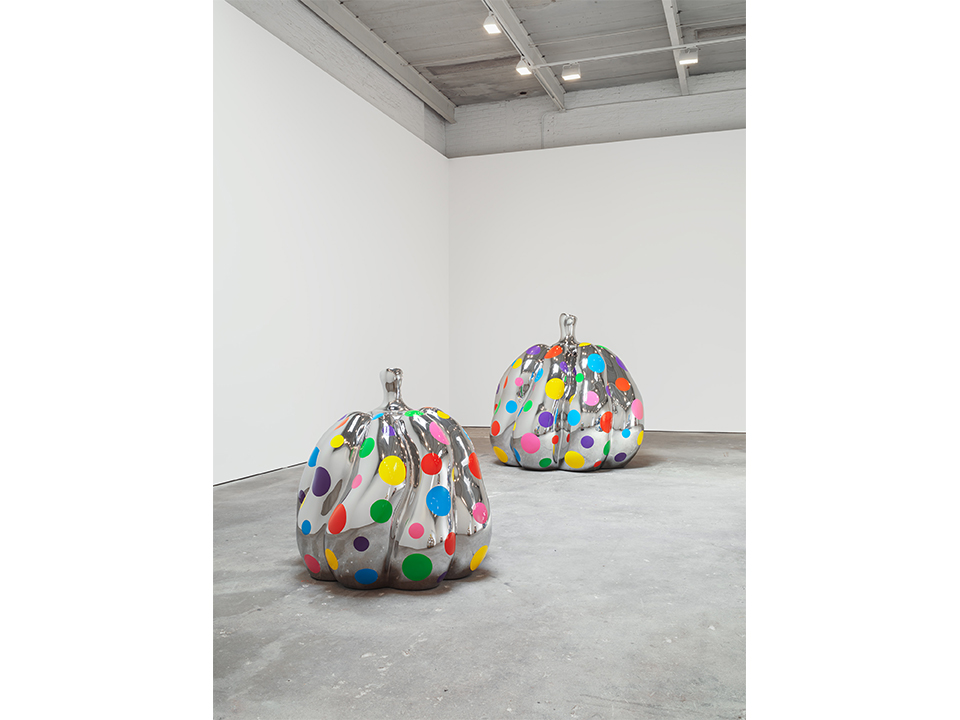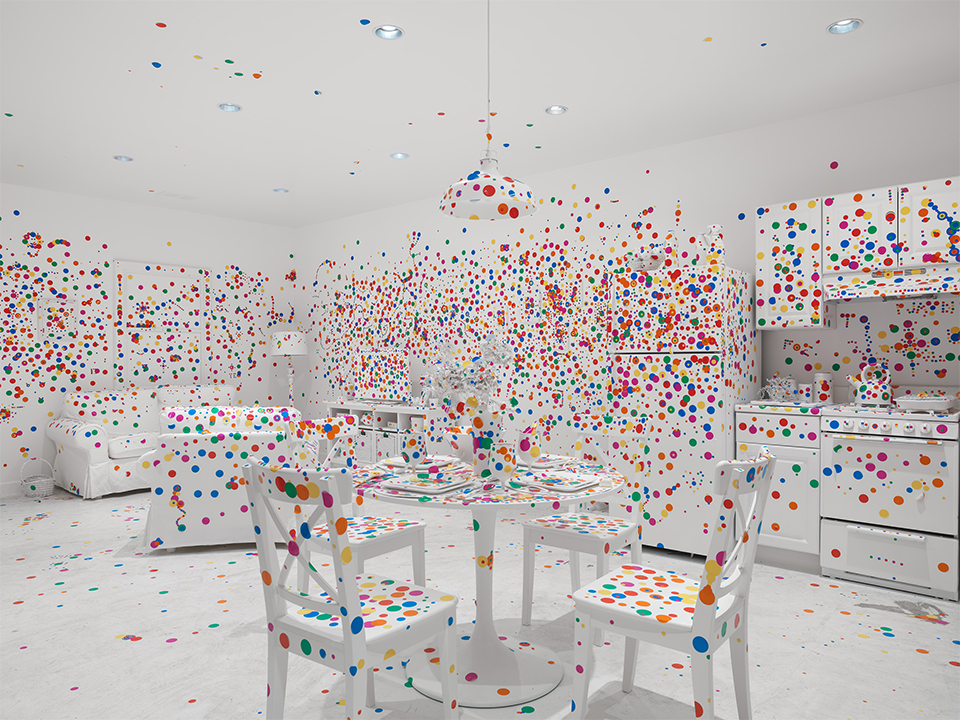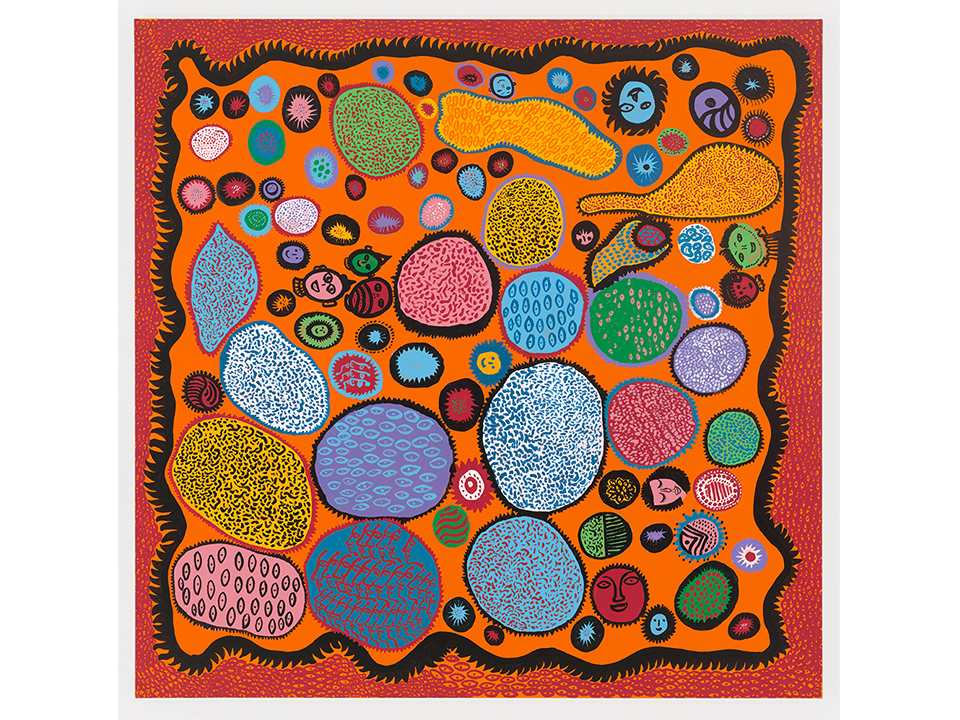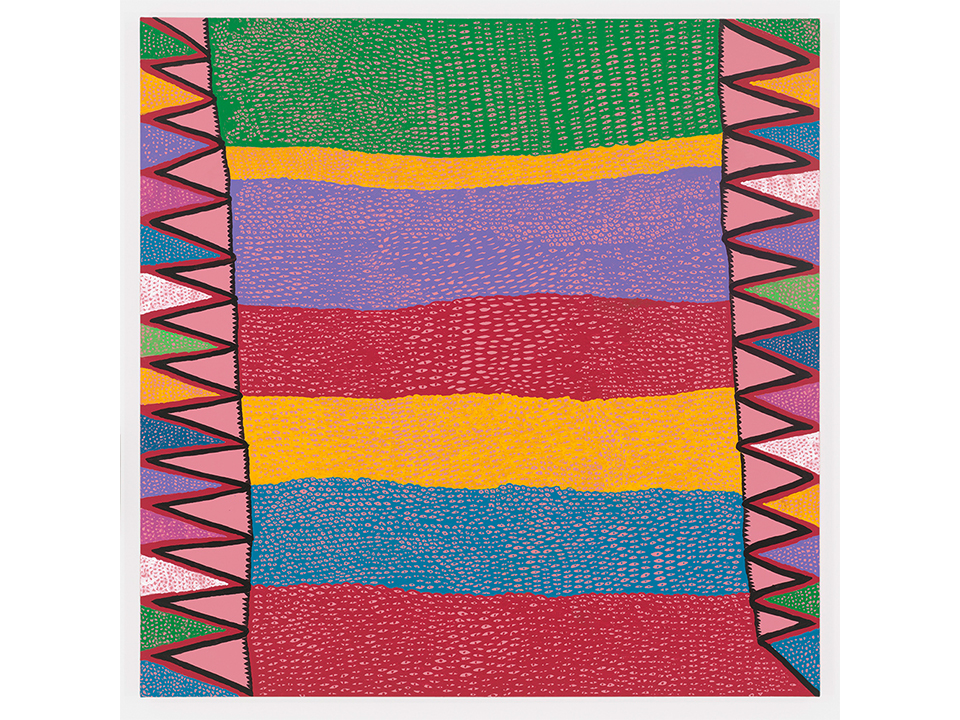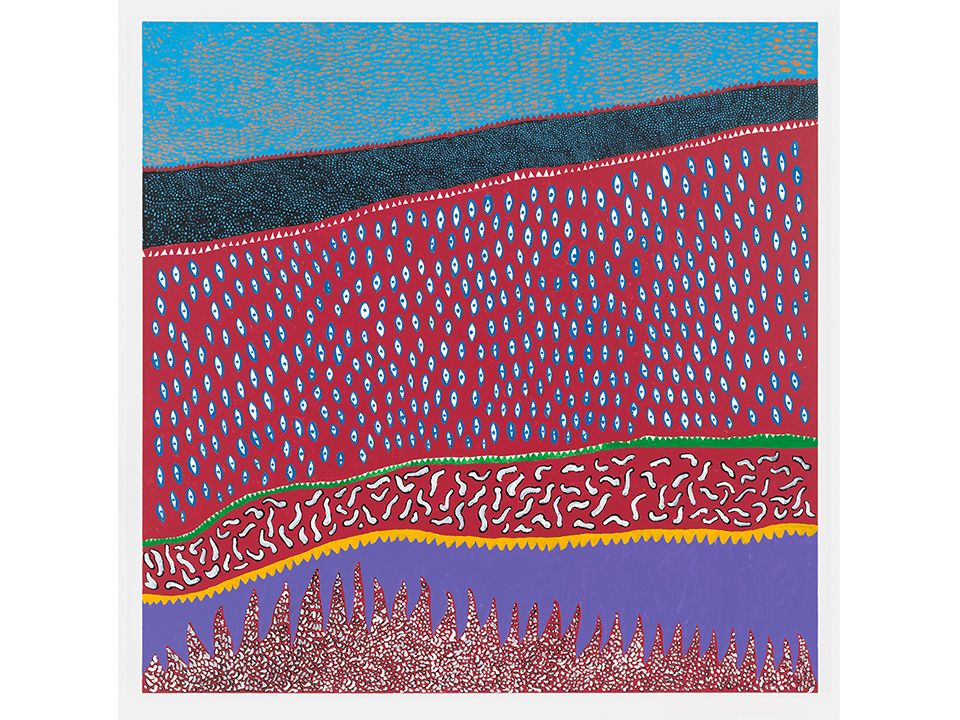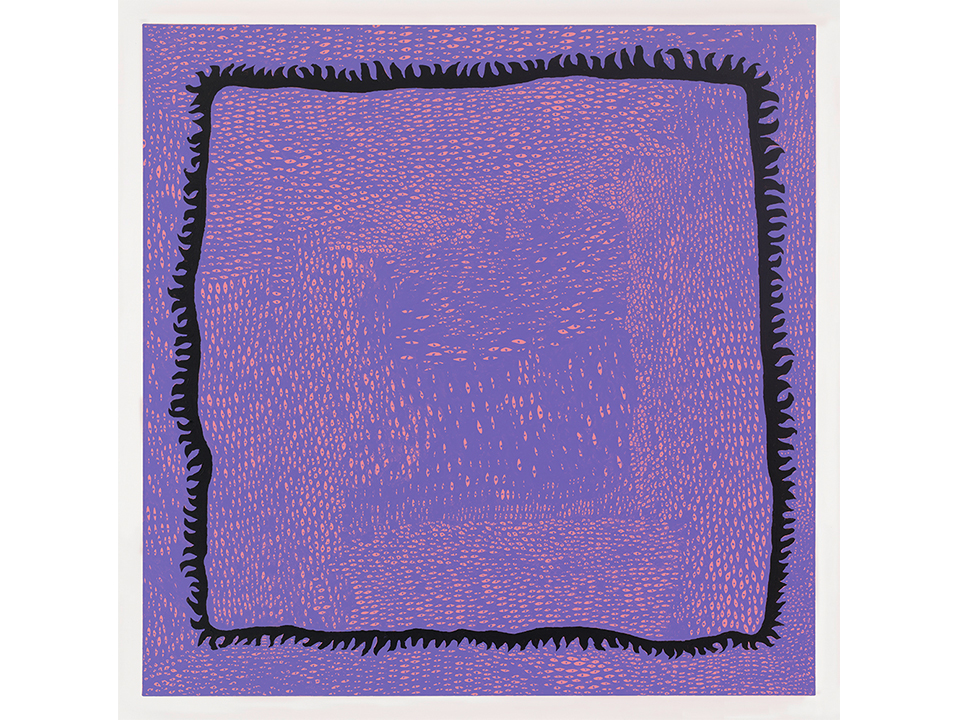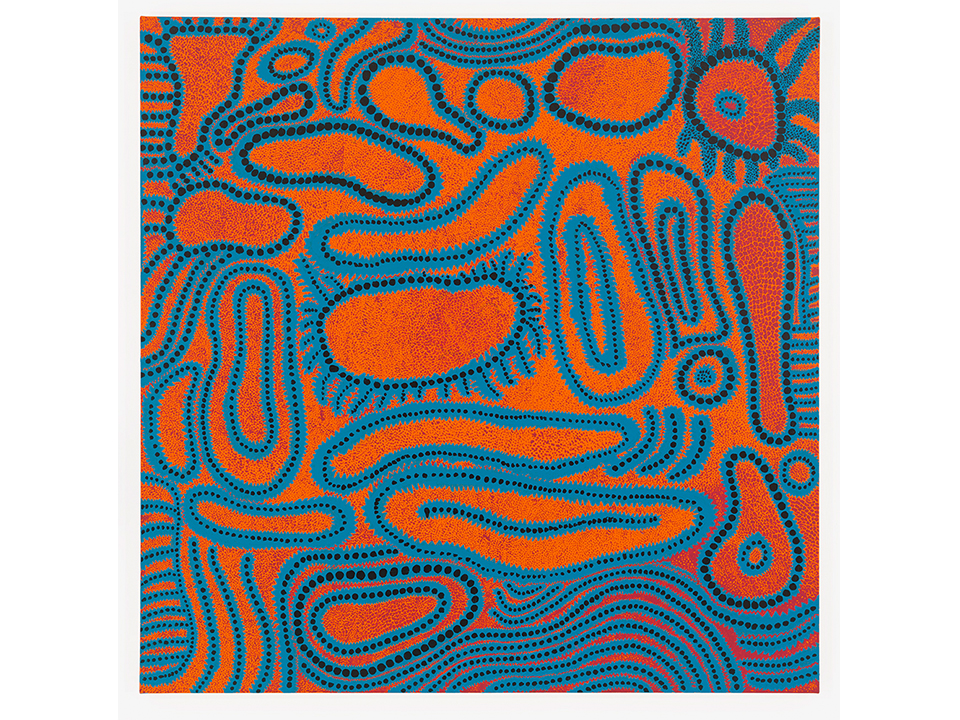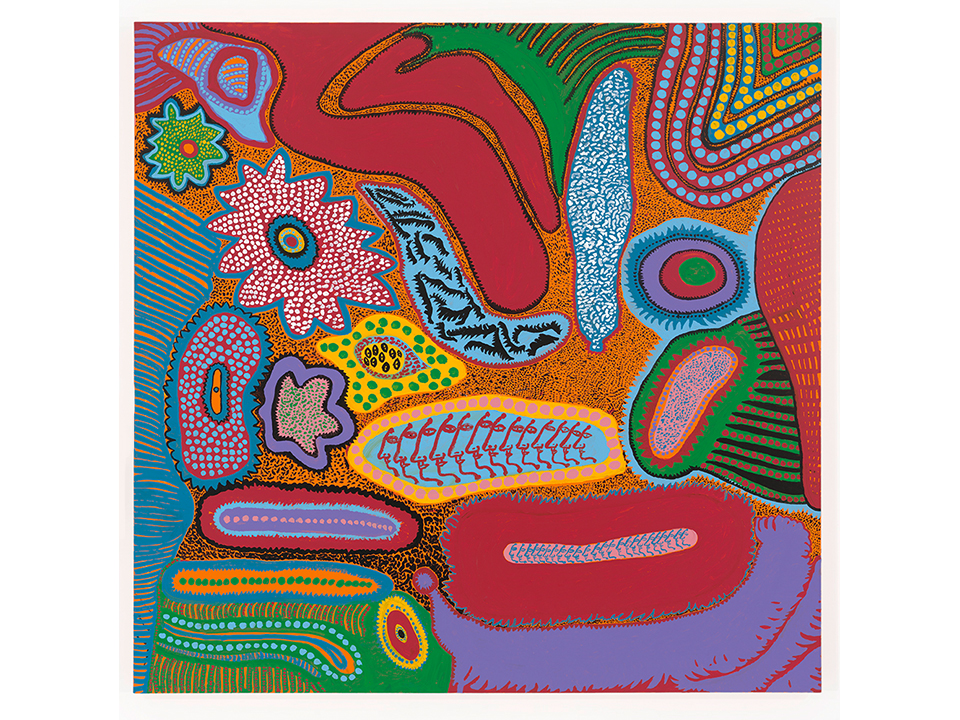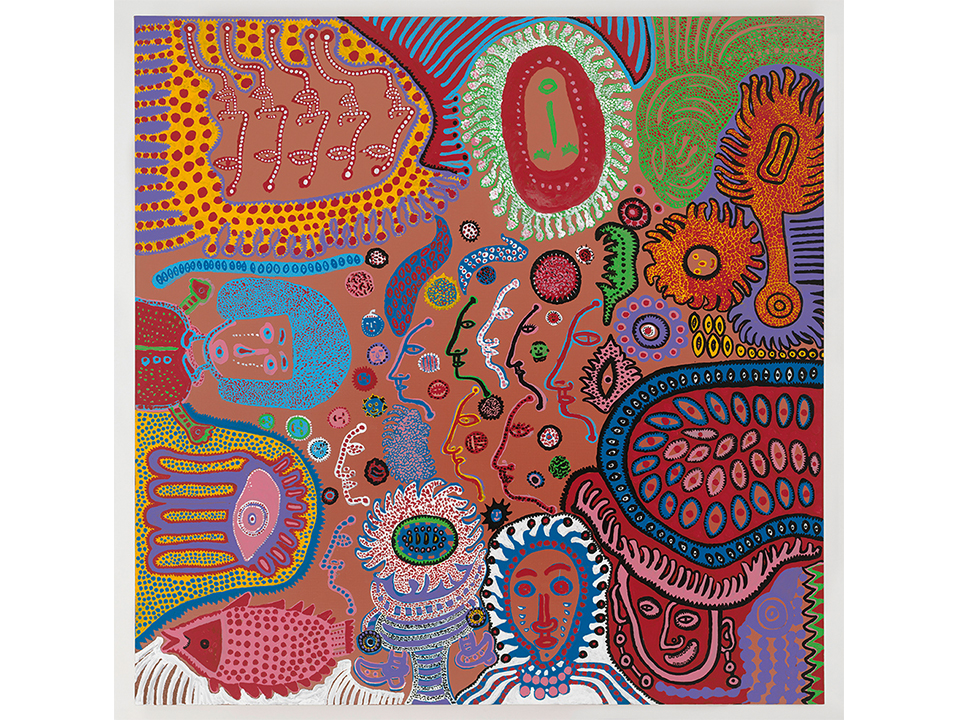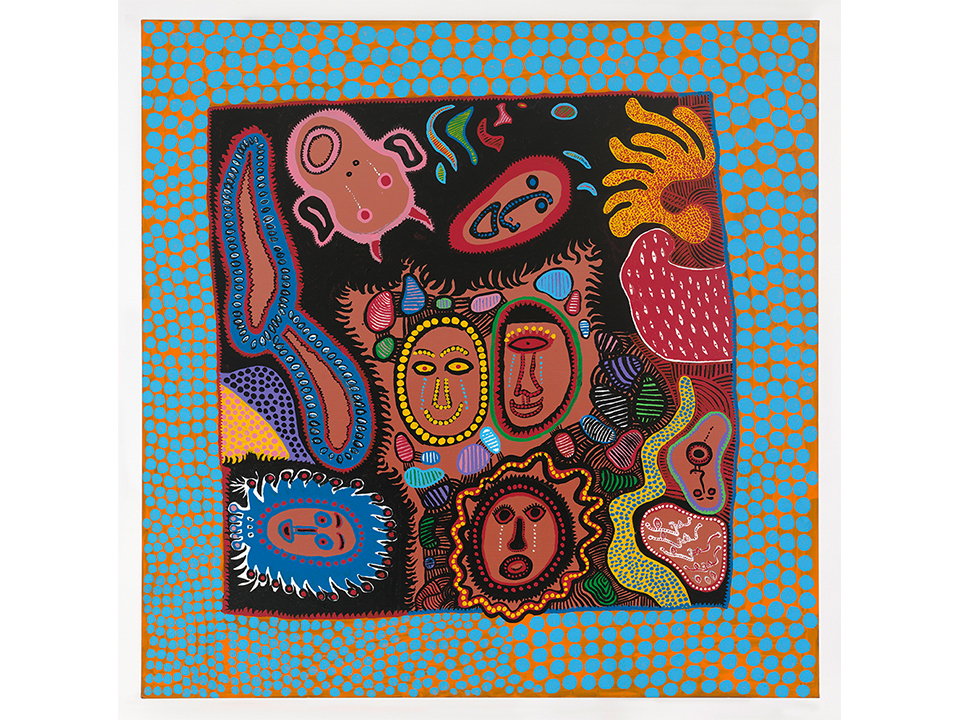A visit to a Yayoi Kusama exhibit is unforgettable. Close your eyes and the images remain — spots, dots, squiggly lines and repeating patterns in saturated, vibrant colors, humming along in a dark expanse. You wonder, is this what she sees before she puts brush to canvas?
Born in Matsumoto, at the foot of the Japanese Alps, Kusama has the kind of compelling life and career that Scheherazade herself couldn’t have spun. Escaping an unhappy childhood, she left for the States after a bit of encouragement from Georgia O’Keeffe, whom she wrote to for advice. When Kusama arrived, at 27, she barely knew any English but soon found herself at the center of New York’s avant-garde heyday in the Sixties, in the same circles as Donald Judd, Andy Warhol, Claes Oldenburg. And she was just as radical as the rest, organizing naked happenings where she painted birthday-besuited people in her signature dots and staging anti-war demonstrations, once even writing to President Nixon and offering herself up in the name of world peace.
In the Seventies, Kusama dropped out of the scene, returning to Japan, and checked herself into a Tokyo psychiatric hospital; it’s where she still resides today. But despite her mental illness, an obsessional neurosis that brings about hallucinations, the artist continues to be ever-prolific. In the past few years, she’s collaborated with Lancôme and Marc Jacobs at Louis Vuitton, and held countless exhibits and retrospectives the world over. Her shows, Instagram catnip, often have lines going around the block.
Now, you too can step into Kusama’s intoxicating world in Give Me Love, from David Zwirner Books (see the slideshow above for a preview). It’s the catalogue that accompanies the gallery’s second solo exhibition on Kusama and, just like the show, you won’t be able to take your eyes off her work — from The Obliteration Room, an actual room guests were invited to decorate with dot stickers at their leisure, to her intense My Eternal Soul paintings. But unlike the exhibit, which closed last year, you can experience Kusama’s beautifully frenetic, many-splendored world again and again and again.
Here, in celebration of Give Me Love’s release this month, we’ve compiled some of our favorite quotations from the artist through the years.
“When I was a child, one day I was walking in the field, when the sky became bright over the mountains, and I saw clearly the very image I was about to paint appear. I also saw violets which I was painting multiply to cover the doors, windows and even my body. It was then I learned the idea of self-obliteration.”
— The Observer, 2000
“I wanted to start a revolution, using art to build the sort of society I myself envisioned.”
— New York Magazine, 2012
“I don’t think about creating the art myself, it’s just my hands move and they do it. It’s not as though I put any intellectual energy into thinking about it, it just develops by itself. It’s wonderful, it’s a mystery how it all happens.”
— The Daily Telegraph, 2012
“I am only interested in myself, because I think one’s own self, if delved deeply into, would be the same as that of other people. For this reason I am spinning my life with art therapy. I think my world is far more interesting and profound than that of mediocre people.”
— The Evening Standard, 2000
“I’m not expected to have common sense because of the illness, which lets me just be an artist.”
— Newsweek, 1998
“I’ve been active in many different spheres of the arts, whether it be writing novels, creating fashion or pure art by itself. What I would like to put across through all of my art is, I suppose, questions of what human life is, what humans are about, what the earth is about, what the universe is about. And the single message is, really, ‘love forever.'”
— The Telegraph, 2012

